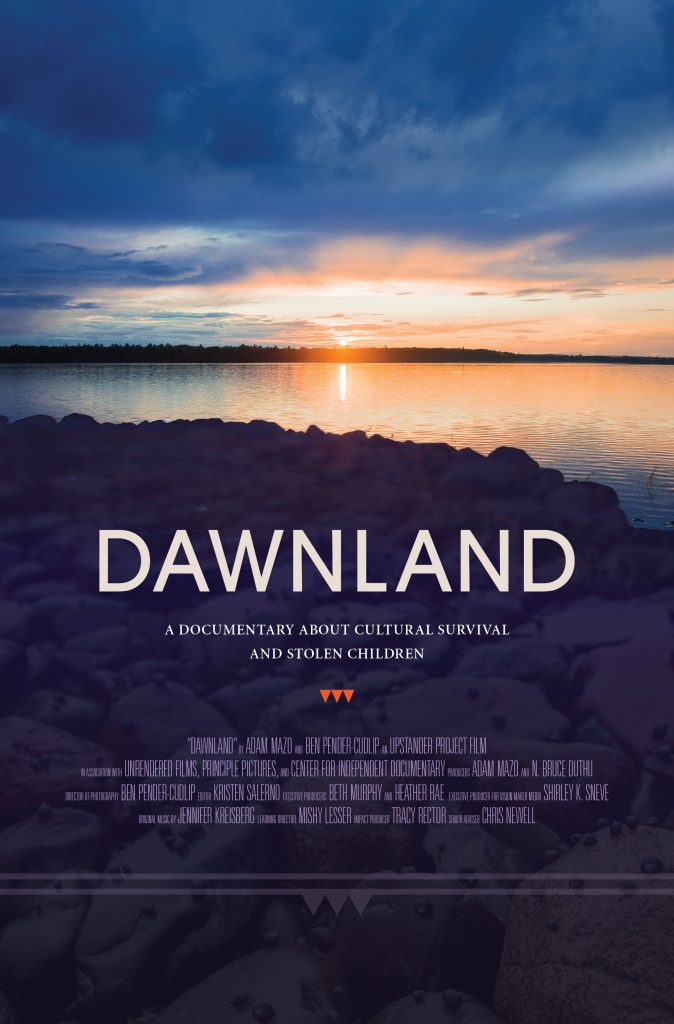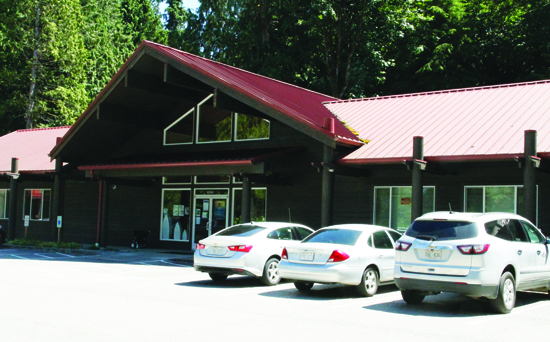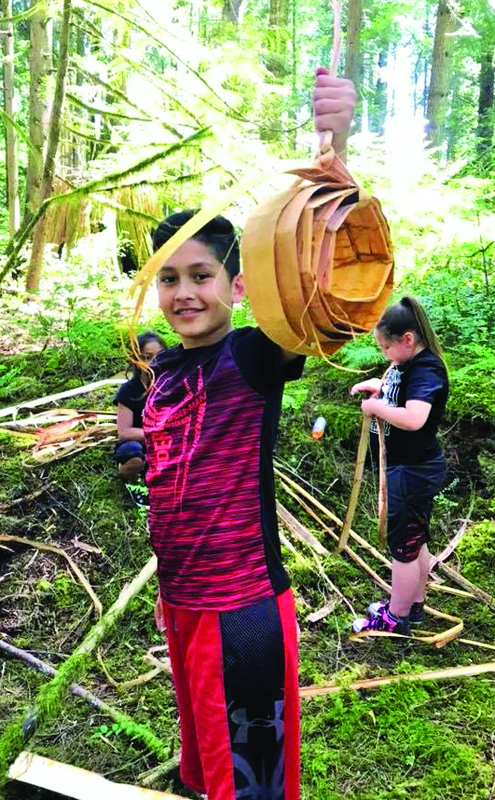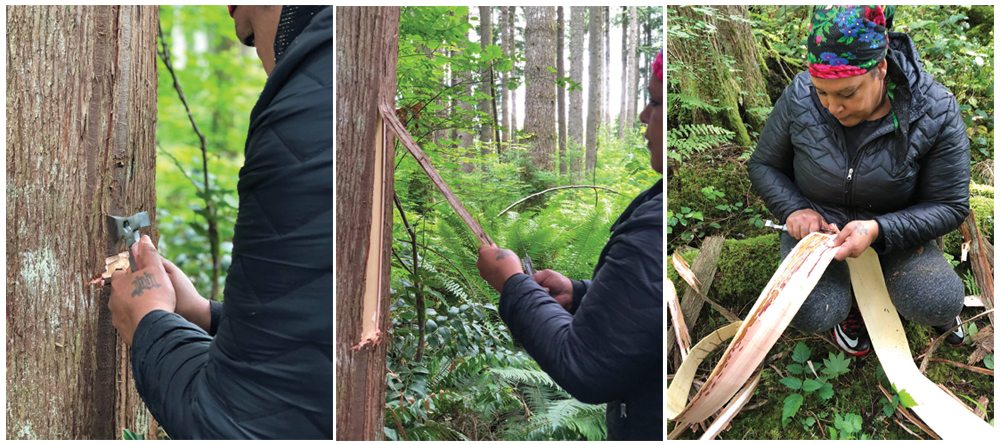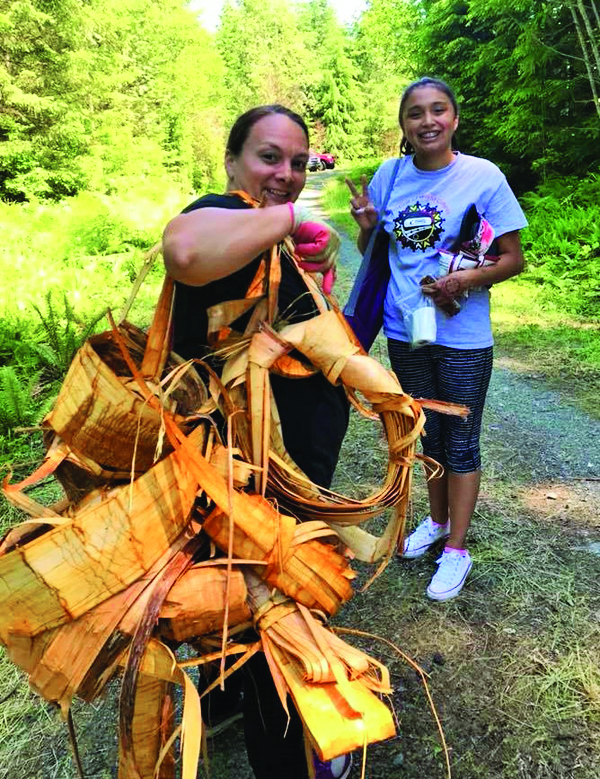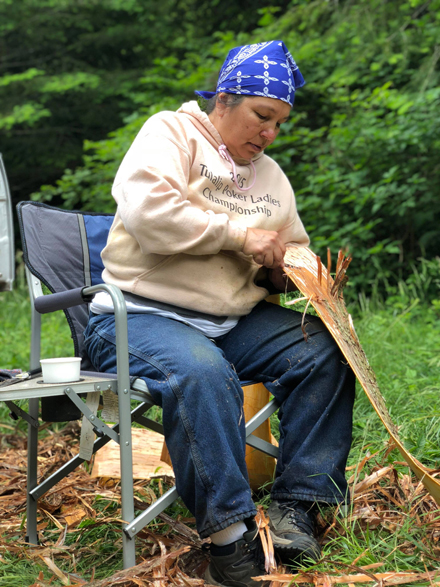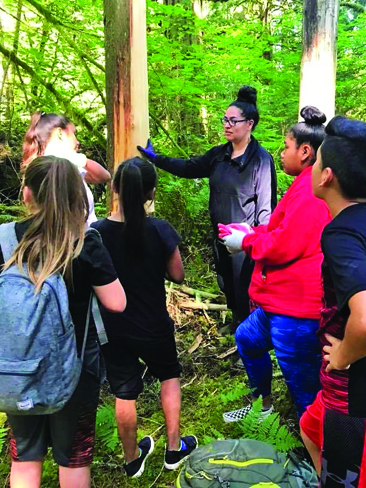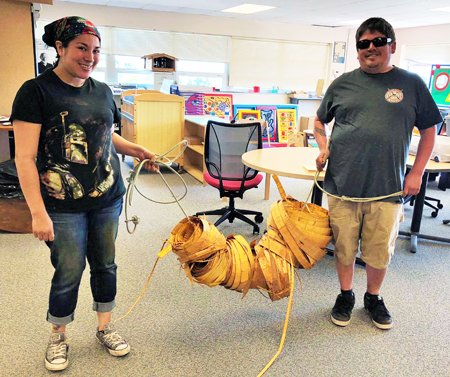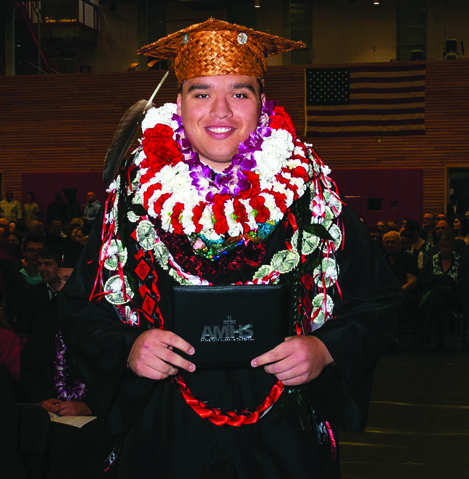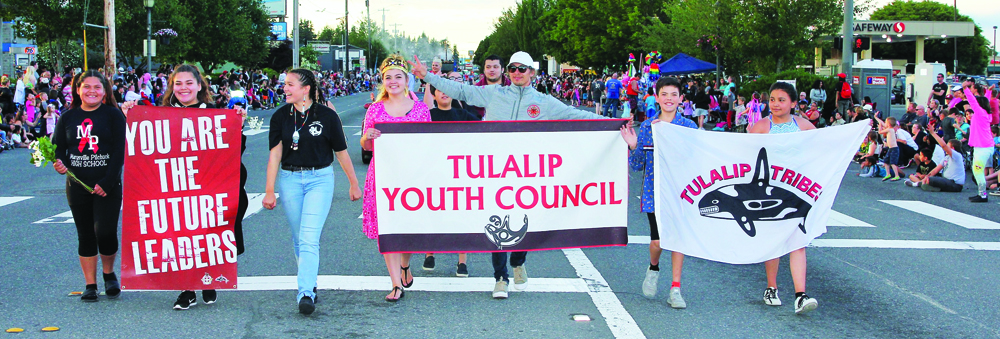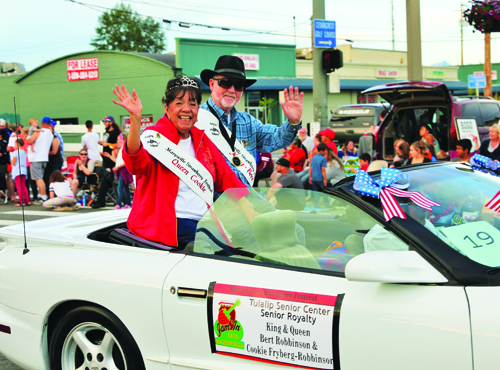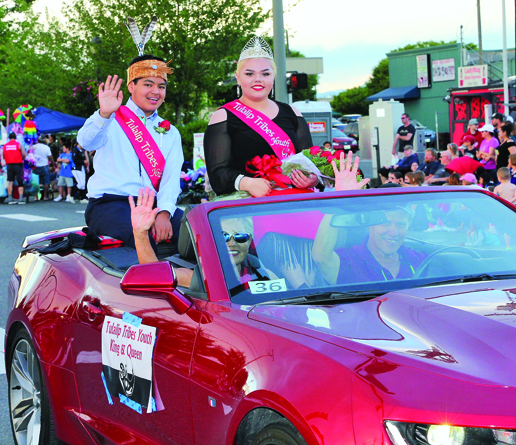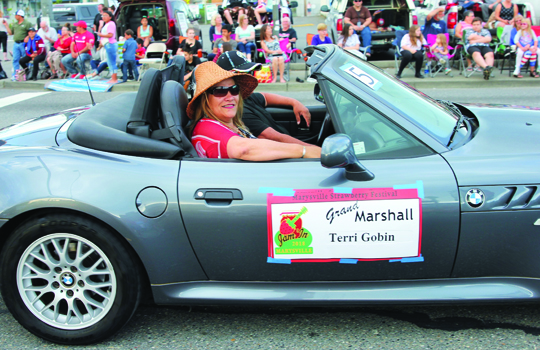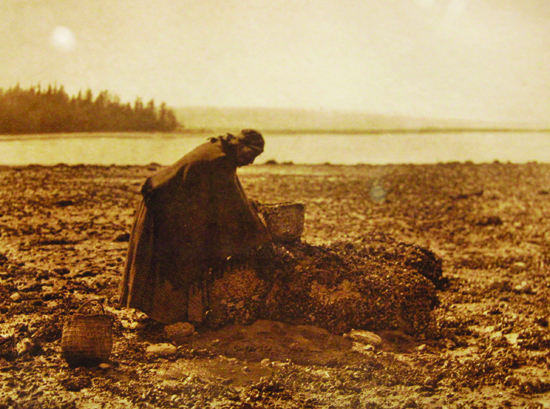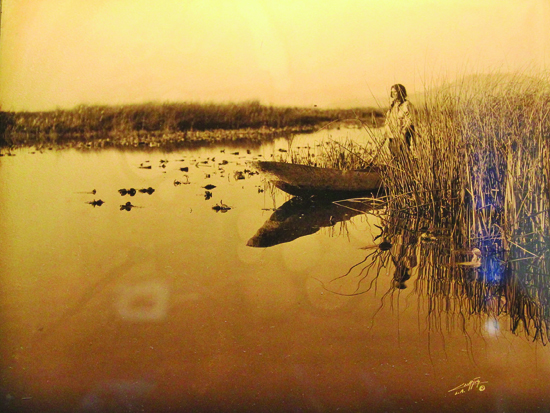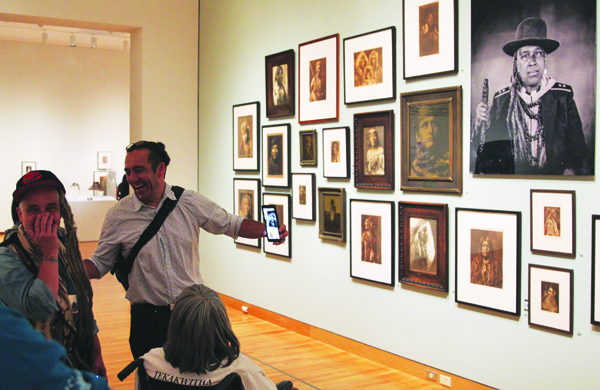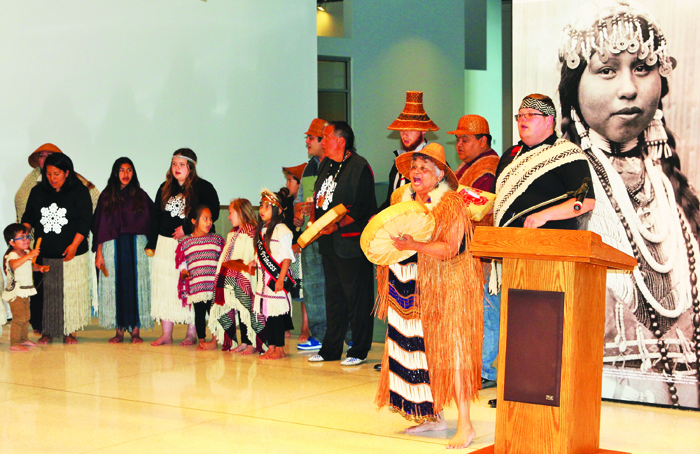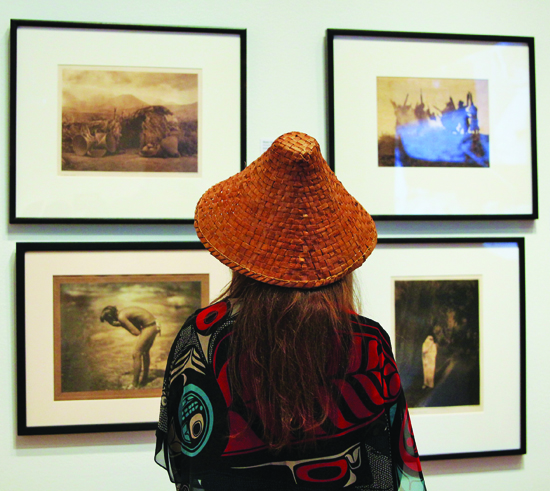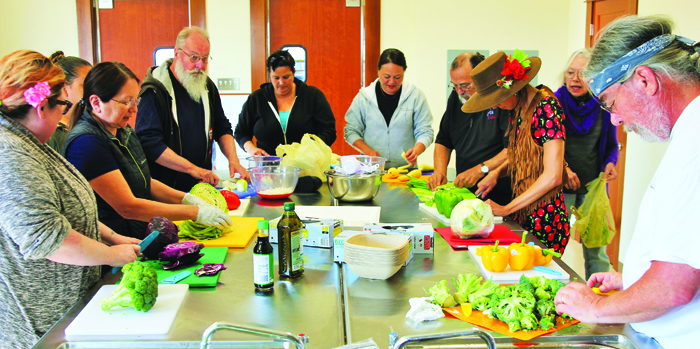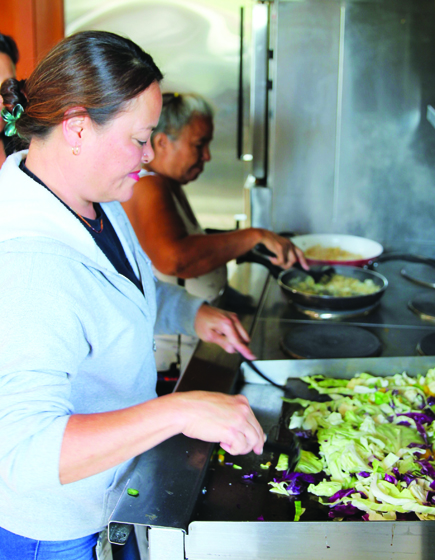Writing an essay might be a challenging task for anybody and it’s not created any easier as soon as the teacher makes an assignment subsequently wants one to actually think of the right matter. Obviously every pupil believes they will have composed professional documents but really they’ve perhaps not because you will find a couple of requirements and should you r composition isn’t able enough to fulfill those standards then there’s no way you’ve composed professional documents. Continue reading “More usually, a quick history is currently going to BE1,000 5,000 words.”
Category: News
New documentary explores Indigenous families’ long history of forced separation
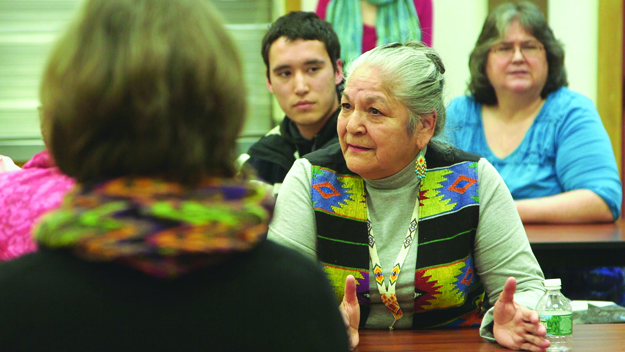
By Micheal Rios, Tulalip News; Photos courtesy of Upstander Project & SIFF
There has been a nationwide controversy over the United States government’s immigration policy in recent weeks. The sweeping wave of shock and disgust directed at the Trump Administration resulted from national news outlets detailing immigrant children being separated from their parents after being caught entering the U.S. illegally from Mexico.
For Native America, visual confirmation of the federal government forcibly removing innocent children from their parents, while arguing it’s for the good of the child, is nothing new. ‘Kill the Indian, save the man’ was a long-lasting theme by which Native children were separated from their communities and put into boarding schools or even unwillingly placed with white families.
For much of the last century, the United States government maintained a genocidal policy that forcibly removed Native American children from their homes and placed them into white communities. As recently as the 1970’s, one in four Native children nationwide were living in non-Native foster care, adoptive homes, or boarding schools.* Many of them faced traumatic physical and emotional abuse by white adults in effort to erase their cultural identity and history.
It’s hard to know just how many children experienced this separation phenomenon of the 19th and 20th centuries because there was no system in place to account for them and many disappeared.
Stolen children, racism, devastated families, and a cultural genocide resulting from government sanctioned atrocities committed against Native peoples are topics thoroughly explored and weaved together in the intense, feature-length documentary Dawnland.
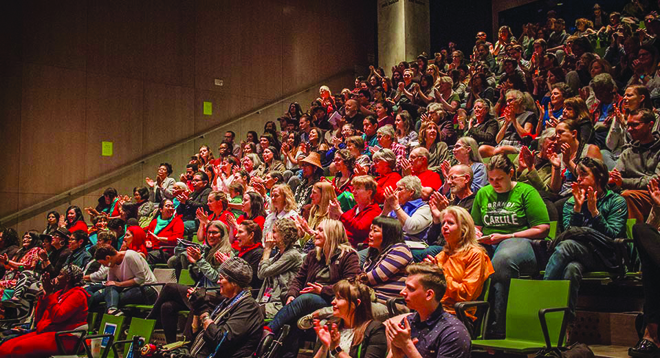
“Today, Native American children are far more likely than other children to grow up away from their families and tribes,” stated Dawnland Co-Director Adam Mazo. “Many of us are familiar with popular culture’s portrayal of the westward expansion, Indian wars, and boarding schools. We are often taught to think that these occurred in a distant time, disconnected from people who are alive here now.”
Dawnland sheds light on the decades of forced assimilation and misguided child welfare policy that devastated generations of Indigenous people. Revealing the untold narrative of Native child removal in the United States, the film goes behind-the-scenes as a state-sanctioned Truth and Reconciliation Commission goes to the Wabanaki tribal community of Maine with the sole purpose of recording the actual history of this policy and to witness sacred moments of truth telling and healing.
The film follows both Native and non-Native commissioners as they travel across the state speaking to tribes of the Wabanaki people. These recorded meetings, the first state government sanctioned of their kind, produce intimate and harrowing moments of truth and reconciliation. But they soon discover these atrocities are more than just history, as current state policy continues to shatter Wabanaki families and threaten the tribe’s very existence. What begins as a learning process evolves into a modern fight for a people’s inalienable human rights.*
As part of this year’s Seattle International Film Festival (SIFF), a special public screening of Dawnland was held at the Seattle Central Library. Sponsored by Tulalip Tribes Charitable Fund, the screening was a hit as the library’s auditorium was filled to max capacity to watch the extraordinary documentary.
“The film will air on Independent Lens nationally on PBS in the 2018-2019 season and we’re super excited,” said filmmaker Adam Mazo in a Crosscut interview. “As far as we know this will be the first time that Wabanaki people are featured on a nationally televised program.”
*Source: Dawnland and SIFF press materials
Safe Zone: Tulalip Family Advocacy assures client safety
By Kalvin Valdillez, Tulalip News
Did you know that the Child Advocacy Center, the Legacy of Healing and the Family Advocacy building, home to beda?chelh and Family Haven, are considered ‘safe zones’? The programs, which are all departments of Tulalip Family Advocacy, wanted to spread the word about the safe zones to help the community get a better understanding of what the zones are and why they were established for the protection of their clients.
“There are three properties out here that have a safety zone policy through the tribe,” explains Jade Carela, Tulalip Child Advocacy Center Manger. “Soon I’ll be getting signs that say Safety Zone, so people know that they’re entering a safe zone. Basically, what safety zone means is people with certain things in their background will not be allowed on the property. And that’s for the safety of our children and clients we work with.”
Jade further explained that beda?chelh and the Legacy of Healing both had safety zone policies in place with the tribe for a number of years. According to the policies, the purpose of the safe zones is to provide a safe environment at each of the Family Advocacy sites. The policies vary depending on the program but are similar in that they prohibit persons convicted of crimes against children, domestic violence and sexual offense from the property; as well as those subject to an ongoing investigation of a sexual offense.
Since the policy’s establishment at the Child Advocacy Center, she has seen a positive impact on the kids, who often worry about their security when at the center, reassuring them that they are safe and out of harm’s way.
The Child Advocacy Center, the Legacy of Healing and beda?chelh all work with survivors of sexual and domestic abuse in a certain capacity. The safe zones help assure their clients that their abuser and anyone convicted of domestic or sexual assault are not allowed on the property at any given time. All properties took extra precautions in providing client security, requiring visitors to meet certain credentials before granting entrance at each site. People with a history of domestic or sexual violence will be asked to leave the property, if they refuse to leave or the situation escalates, the authorities will be contacted to remove them from the premises.
Jade is spreading awareness about the safe zones to survivors, to let them know that the programs provide a safe space. And to those who have been previously convicted of a crime, Jades states their services are still available to them, and they can meet with those clients off-property.
“Because someone has something in their background doesn’t mean we won’t help them,” says Jade. “This policy is in no way stating that we won’t help you, it is strictly to ensure our children and adult victims feel safe. I work with these victims daily and I see how important it is to them, how safe these places are. I personally know that people can change and can grow, I get that, but we need places on this reservation for our victims of crime to feel they are completely safe and know that no one, no matter how long ago their crime was committed, will be allowed on the property.”
For further details regarding the safe zones and what services the programs offer please contact the Child Advocacy Center at (360) 716-5437; the Legacy of Healing at (360) 716-4100; Family Haven at (360) 716-4402; or beda?chelh at (360) 716-3284.
Teachings of the cedar tree
By Micheal Rios, Tulalip News; Photos courtesy of Natosha Gobin & Theresa Sheldon, Tulalip Tribal members
“Pray, pull, peel …it’s so peaceful being out there. Being disconnected from the busyness of daily life is refreshing and that silence is healing,” reflected tribal member Natosha Gobin of her day spent walking in the shadows of her ancestors near Lake Chaplain, harvesting cedar. “It’s amazing to watch the experienced ones of the group pull strips and separate them with ease. This is just one of the many ways to stay connected with not only each other but our ancestors, through keeping their teachings alive.”
Coast Salish tribes believe the Creator gave their people cedar as a gift. Traditionally, a prayer was offered to honor the spirit of the tree before harvesting its bark, branches and roots. Their ancestors taught them the importance of respecting cedar and understanding how it is to be used, so that it will be protected for future generations.
Cedar was the perfect resource, providing tools, baskets, bowls and carvings in addition to having medicinal and spiritual purposes. The highly sought after inner bark was separated into strips or shredded for weaving. The processed bark was then used like wool and crafted into clothing, baskets and hats.
Those same traditional teachings are practiced today and passed down to the next generation. Over the weekend of June 15, the Tulalip Tribes membership was given the opportunity to participate in the cultural upbringings of their ancestors by journeying into their ancestral woodlands and gathering cedar. Led by Forestry staff from Tulalip’s Natural Resources Department, participating tribal members ventured just north of Sultan to Lake Chaplain, located on the outskirts of the Mount Baker-Snoqualmie National Forest.
The annual cedar harvest showcases a partnership between several agencies working as a team to coordinate this culturally significant opportunity. The Tulalip Natural Resource’s Timber, Fish, and Wildlife Program generally arranges a cedar harvesting site for the upcoming season by utilizing existing relationships with off-reservation landowners and the Washington State Department of Natural Resources.
“We have grown and maintained a wonderful working relationship with the Washington State Department of Natural Resources (DNR), who provides opportunities to pull cedar bark from trees within DNR’s timber stands that would otherwise not be available to tribal members,” explained David Grover, Tulalip Tribes Forestry Program. “Having opportunities not just to acquire the bark itself, but also to spend time practicing the cultural tradition of harvesting from the cedar trees, and passing that tradition on to the tribal youth is invaluable for the tribe.
“This [opportunity] also offers the DNR foresters that help us on site during these events a chance to gain a better understanding of the forest resources they manage, as well as a unique glimpse into the different types of relationships people have with those resources that are not tied to timber sales,” added Grover.
The relationship Coast Salish peoples have with cedar cannot be understated. Our ancestors relied on the magnificent tree as an integral part of their life on the Northwest Coast. From birth to death, the powerful cedar provided generously for the needs of the people – materially, ceremonially and medicinally. Those teachings have not been lost.
Master weavers, elders, and youth alike all echo the very same cedar harvesting technique employed by their ancestors. With a small ax and carving knife, they skillfully remove strips of bark from designated cedar trees. They then shave off a small section of the rough bark, revealing a smooth tan inner layer. After harvest, the cedar strips are typically laid out to dry for a year before being made into baskets and hats or used in regalia.
Many Tulalip youth participated in the three-day cedar harvesting event, gathering strips for elders and learning techniques of separating the smooth inner bark from the rough outer bark. For some tribal members it was their very first trip to gather cedar, while for others it was another step in the continual journey to connect with the spirits of past and present.
“Thankful for Natural Resources and the Rediscovery Program who constantly advocate and work hard so we can have access to gathering locations,” shared tribal member Theresa Sheldon. “Their work is appreciated and much needed as more and more traditional areas are being gated off and made harder to access.
“Taking our children out to learn how our people harvested cedar is a gift. We were able to share with our young ones that our people have always cared for the grandmother Cedar trees and in return they care for us by providing clothing and protection from the elements. Appreciating each other, sharing our energy together, and respecting our ancestors by teaching our children how to value nature is who we are as a people.”
Annual Health Fair, July 27
Martin Napeahi Jr. to begin college football career
By Kalvin Valdillez, Tulalip News; Football photos courtesy of Geoff Vleck, USA Football
“When football season ended, I didn’t think I was going to play anywhere because no colleges were really talking to me,” recalls Tulalip tribal member Martin Napeahi Jr. “It was tough, some of my teammates were getting scholarships and I was working just as hard as them, if not harder. But I stayed focused and kept working. And then Central [Washington University] called and gave me an offer. I went and visited and it’s a really nice campus. They have a good community especially within their football program, everyone’s very welcoming.”
Martin set a goal at a young age. A goal that he would work tirelessly toward throughout his entire high school career. Six years ago, while he was in the seventh grade, Martin attended an Archbishop Murphy High School football game. Although Archbishop lost that game by a major deficit, Martin left that game knowing he wanted to attend their high school and be a part of their football program. The decision to attend the private Catholic college-prep school was based around attaining his goal of playing college football.
“The football program at Archbishop is ran similar to a college program, it’s very intense,” says Martin Napeahi Sr., Archbishop Murphy Football Coach and Martin Jr.’s father. “The amount of work these guys put in is tremendous. It’s practically football seven days a week from August to December.”
“I became interested in Archbishop Murphy when I was in middle school, I had some family there,” says Martin Jr. “My freshman year we made it to the first round of playoffs and got smoked. We placed third at state my sophomore year, junior year we won state and my senior year we placed third again.”
Martin’s first season initially sparked the fire that fueled his work ethic. After failing to secure a starting position as a freshman, he was determined to work even harder during the offseason to ensure his spot as starting center during the next season. Ever since, he’s applied that same energy and received a variety of accolades, proving that hard work does indeed pay off.
“It wasn’t easy, especially my junior year,” he states. “Looking back at all of that now, it’s kind of funny because I know that myself and the other kids who weren’t from the Mill Creek-Everett area – none of us were recruited.”
During the 2016-2017 high school football season, the Archbishop Murphy Wildcats made national headlines and were even mentioned on ESPN. The news, however, was unfortunate to Martin and his teammates who trained hard all season only to see a number of opponents forfeit their games against them. The concern was for safety reasons as other teams noted that Archbishop’s players had a size advantage over their players. This sparked a bit of controversy as several private schools were accused of recruiting students for sports rather than academics.
“Even with all the forfeits and the people saying we were recruited, I loved it. It was fun,” Martin expresses. “The schooling was great, it got me to where I am. If I went to any other school, I don’t know what kind of opportunities I would’ve been presented football-wise and school-wise. Football’s been a blessing because it got me to college. That was always my goal, to play college football.”
On National Signing Day 2018, Martin Jr. officially accomplished his goal. He signed on to play with the Central Washington University football program. From an Archbishop Wildcat to a CWU Wildcat, Martin is ready and eager to begin his new journey.
“It’s two hours away from home, so not too far, yet not too close either. It’s going to be nice being on my own, trying to figure the world out by myself. After college, if I were to go to the NFL or CFL, that would obviously be awesome but I’m going to major in exercise science and minor in nutrition so I can stay in the athletic field to become an athletic trainer or sports nutritionist.”
After committing to CWU, Martin finished his high school career by competing in track and field, throwing both the discuss and shotput. He is currently the record holder for both events at Archbishop Murphy and placed fourth this year at state.
“I think he wanted to do better at state, he was a little upset,” says Martin’s grandmother Annette Napeahi. “But that is still a great accomplishment. We’re just so proud of him for working hard to achieve his goals. He’s going to college for football, that’s not easy. People aren’t just handed sports scholarships, you have to work for it and he definitely worked hard for his. It’s been so awesome to watch him and I can’t wait to see what’s next.”
On the evening of Friday June 8, Martin received his high school diploma.
“Graduation was cool,” he says. “I was wearing a cedar cap and everyone thought it was cool. And because of my Hawaiian side, I had a ton of leis that covered up my entire face. My auntie Betty was in the process of making one of the leis for me and she passed away. Her daughter finished it for me and I was able to wear it on graduation day, it was really special. It was cool to see everyone’s reaction to my culture because that’s important to me. Not everyone has the same culture that I’ve been blessed with, so I’m glad I got to share a part of who I am.”
“I feel an overwhelming sense of pride,” says Martin Sr. “Especially knowing what we’ve been through. From his early life, he was five and a half weeks premature and the doctors didn’t know if he was going to develop properly. And here we are today. He does great in school and is a pretty low-key kid, doesn’t go out and do a bunch of crazy stuff. Its bittersweet, coaching him all these years and being on the sideline as his number one fan. As a coach, I’m super proud. As his dad, all you can ask for is that your kids are successful and do more or better than you when you were at that age. I think we did a pretty good job.”
Before beginning his first year at Central, Martin’s summertime plans include hanging out with family and friends as well as playing Fortnite. But most importantly, Jr. plans to keep up with his early morning weight room regimen, training for the game he loves. Martin also offered solid advice to the younger students of the community who wish to follow a similar path to his.
“You just have to keep working at it. It’s going to be hard and discouraging at times, especially with football, the practices and coaches constantly in your face, but keep at it. Have a goal in mind and set out to achieve it, work your tail off and keep building on that goal. And when people try to shoot you down, block them out and keep working toward your goal.”
Parade highlights Strawberry Festival celebration
By Micheal Rios, Tulalip News
A Marysville/Tulalip community tradition since 1931, thousands of families filled the sidewalks of State Street on Father’s Day to enjoy the Strawberry Festival’s Grand Parade. Tulalip Resort Casino was recognized as the top-level, Orca sponsor for the 87th annual Strawberry Festival.
The festival took place over the weekend of June 15 to 17. During those days Marysville Middle School and Asbery Field were home to children’s activities, live entertainment, a talent show, craft making, a large outdoor market, and a fun for all ages carnival. Concluding the festival was the Grand Parade.
Tulalip was well-represented with a variety of themed displays throughout the parade, adding to the spectacle of stunning visuals and raucous sounds. Tulalip Bay Fire and the police department lent the sirens of their emergency services vehicles to signal the parade’s start.
Board of Director Teri Gobin served as Grand Marshall.
Beginning at 7:45pm, the parade lasted approximately 90-minutes, ending shortly after sunset. Unlike years past, there was no dazzling firework show to mark the parade’s end because of Marysville’s city-wide ban on fireworks, even for display purposes.
Major exhibition presents a Native-activated space, explores legacy of Edward S. Curtis
By Micheal Rios, Tulalip News
The Seattle Art Museum (SAM) presents Double Exposure: Edward S. Curtis, Marianne Nicolson, Tracy Rector, Will Wilson (on display from June 14 – September 9). Featuring iconic early 20th-century photographs by photographer Edward S. Curtis alongside contemporary works – including photography, video, and installations – by Indigenous artists Marianne Nicolson, Tracy Rector, and Will Wilson. Their powerful portrayals of Native identity offer a compelling counter narrative to the stereotypes present in Curtis’s images.
Edward S. Curtis is one of the most well-known photographers of Native people and the American West. Double Exposure features over 150 of his photographs. Threaded throughout the galleries of his works are multimedia installations by Marianne Nicolson, Tracy Rector, and Will Wilson. Their work provides a crucial framework for a critical reassessment and understanding of Curtis’s representations of Native peoples, while shedding light on the complex responses Natives and others have to those representations today.*
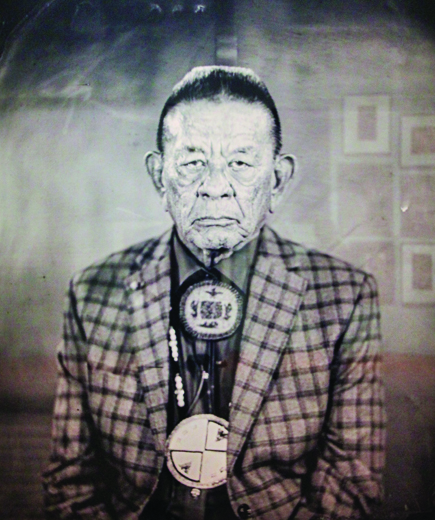 “The historical significance of Curtis’s project is well-established,” says Barbara Brotherton, SAM’s Curator of Native American Art. “In many cases, his photographs and texts provide important records of Native culture. However, it’s time for a reevaluation of his work. His methodology perpetuated the problematic myth of Native people as a ‘vanishing race.’ This exhibition reflects a collaboration among SAM, the artists, and an advisory committee comprising Native leaders to make a space for a reckoning with Curtis’s legacy.”
“The historical significance of Curtis’s project is well-established,” says Barbara Brotherton, SAM’s Curator of Native American Art. “In many cases, his photographs and texts provide important records of Native culture. However, it’s time for a reevaluation of his work. His methodology perpetuated the problematic myth of Native people as a ‘vanishing race.’ This exhibition reflects a collaboration among SAM, the artists, and an advisory committee comprising Native leaders to make a space for a reckoning with Curtis’s legacy.”
Three contemporary Indigenous artists in Double Exposure challenge assumptions about Native art and illustrate how Native communities continue to creatively define their identity and cultures for themselves. First Nation artist Marianne Nicolson created an immersive sculptural light installation that casts moving shadows to address the impact of the 1964 Columbia River Treaty on Native communities.
Seminole and Choctaw filmmaker/artists Tracy Rector empowers Indigenous communities by capturing the activism, defiance, and reclaimed traditions of Native tribes through her new video work of short stories derived from environmental awareness and life experiences of Natives today.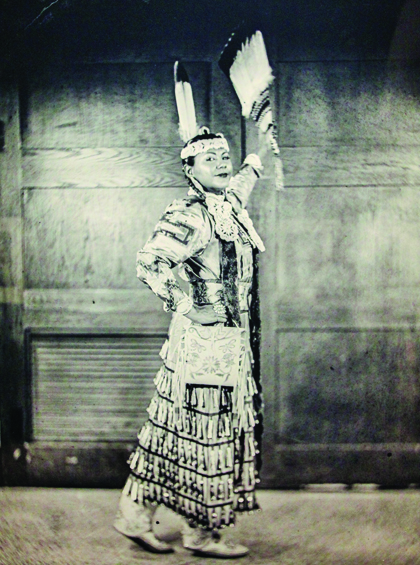
“All of my work is centered in Indigenous story: for, by, and about Indigenous people,” says Rector, whose video will welcome viewers inside a “Native-activated space” surrounded by related art.
Will Wilson’s large-scale tintype portraits feature Native lawmakers, artists, educators, and community members from the Seattle area. Artist Tracy Rector, Senator John McCoy, and others will speak through “talking” tintypes created using augmented reality. Wilson, a Navajo/Diné photographer, aims to counter stereotypes that Curtis’s work propagated.
“I want to supplant Curtis’s ‘settler’ gaze and the remarkable body of ethnographic material he compiled with a contemporary vision of Native North America,” states Wilson.
Double Exposure is a chance to see art of Native Americans in all its complexity through each of these artists’ perspectives on culture and identity.*
In honor of Double Exposure’s opening, the Seattle Art Museum invited any individuals with tribal affiliations to be the first visitors to view the exhibit. Dubbed ‘the Indigenous Peoples opening’, held the evening of June 11, representatives from many Coast Salish tribes gathered at SAM for the free event which included admission to the exhibit, performances by the Suquamish canoe family, and songs shared by Lummi violinist Swil Kanim.
“This Indigenous-only celebration was inspired by Miranda Belarde-Lewis (Tlingit/Zuni),” explains artist Tracy Rector. “She suggested the idea of decolonizing curation and what it means to indigenize museum spaces. Having a Native-centered exhibit opening is a way we could be in community experiencing artwork together.”
*source: Seattle Art Museum press releases, exhibition literature
Image credits: Kalamath Lake Marshes, 1923, Edward S. Curtis, goldstone. Mussel Gatherer, 1900, Edward S. Curtis, photogravure. John McCoy (Tulalip) – Talking Tintype, 2018, Will Wilson, exhibition print. Madrienne Salgado (Muckleshoot) – Talking Tintype, 2018, Will Wilson, exhibition print.
Journey to a healthier you
By Micheal Rios, Tulalip News
Everyone wants to live a healthy life. The ideal health for most is reached by eating nutritious meals to fuel the body and mind, while being balanced with enough physical activity to keep the body working properly.
But where does one start? There seems to be an endless amount of questions to ask and information to gather before starting a journey to a healthier you. Luckily, for the Tulalip community, the Supplemental Nutrition Assistance Program Education (SNAP-Ed) and a team of health experts are here to help by offering a series of nutrition and cooking classes that are fun and interactive.
Eat Smart, Be Active classes will be taking place every Tuesday from now until July 31 at the Tulalip Dining Hall from 5:00pm – 6:30pm. If you are interested in learning more about whole foods, quality health, exercise, meal prepping, or cooking quick and healthy meals on a budget, then this is the perfect opportunity.
“Making healthy lifestyle changes is not an easy thing to do, but in the end the reward is so worth it!” stated AnneCherise Jensen, SNAP-Ed Nutritionist. “Eat Smart, Be Active classes really do give you an opportunity to learn, to ask questions, to discuss, and gain the tools you and your family need to live a happy, healthy, energetic life. Overall, these classes are very positive, energetic, and fun. We have a great preventative care team that truly cares about your health and wellbeing.”
Eating healthy doesn’t have to mean dieting or giving up all the foods you love. During the opening class on Tuesday, June 5, the twenty-five health conscious participants learned about ditching junk food and give their bodies the nutrient-dense fuel it needs by making a meal together. The main course? A delicious chicken stir fry made with nine different flavorful vegetables.
After learning a 15-minute aerobic exercise routine that can be done at the comfort of home, the community members received basic cooking instruction before gathering in the kitchen. There each participant had a job to do in order to make the evening’s meal. Finally, while enjoying the freshly prepared chicken stir fry, instructors reviewed all the nutrients being consumed and emphasized how simple the process had been.
“It was empowering as a community to get together and participate in a healthy, nutritious meal,” added AnneCherise after the evening class had ended. “There are so many amazing health benefits to making these small, gradual changes. You start to have more energy, you begin to feel more confident in yourself, you find yourself in better moods, and the more and more you do it – the more friends you will find to exchange recipes with and encourage each other along the way.”
If you missed out on the opening class, no worries. The invite is open to anyone who wishes to learn about healthier lifestyle choices when it comes to nutrition and physical activity. Come in to as many classes as you can, if not all of them.
Questions? Please contact AnneCherise Jensen, SNAP-Ed Nutritionist at 360-716-5632 or ajensen@tulaliptribes-nsn.gov OR Brooke Morrison, Tulalip Diabetes Prevention Assistant at 360-716-5617 or bmorrison@tulaliptribes-nsn.gov
‘Go Hard or Go Home’ league wraps up spring season
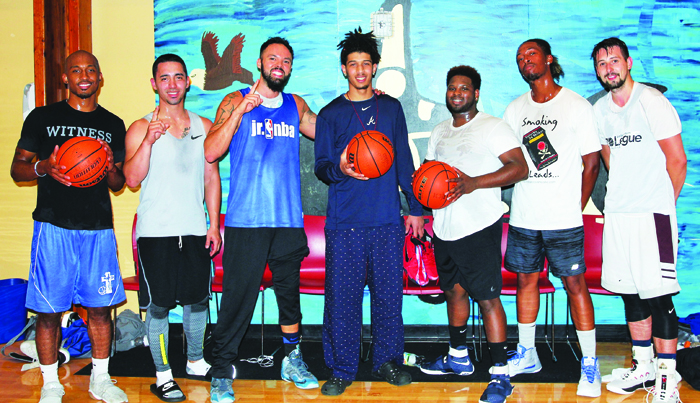
By Micheal Rios, Tulalip News
Established in February 2015, the Go Hard or Go Home community basketball league is organized by Youth Services staff and has gained more notoriety with each passing season. Local ballers can be found competing on the hardwood every Monday and Wednesday evenings at the Tulalip Youth Center.
The league is a prime outlet for basketball players of every level. And most importantly, everyone is welcome to participate. There are former high school stand-outs, a couple college players, but mostly people who just love the sport.
After paying a modest fee of $200, each team played a nine-game regular season and everyone had a spot in the postseason playoffs. Giving Tulalip ballers the best bang for their buck has been a priority of the community league. In fact, costs have been minimal and the amount of games plenty when compared to most basketball leagues.
Spring season saw nearly ninety players make-up the ten teams vying for bragging rights and making the most out the opportunity to play competitive, localized basketball. Ages ranged from early teens to elder statesmen.
“This league is great for the community,” said Fred Brown Jr., long-time community friend and lead-referee of the past season. “Spring season ran for three-months, giving people in the community something to do either as players or spectators. Most interesting to me was the variety of basketball games. There were high-flyers, 3-point specialists, under the rim fundamentally sound guys, and then those playing to get into shape or to stay in shape. It was a good basketball season for everyone involved.”
